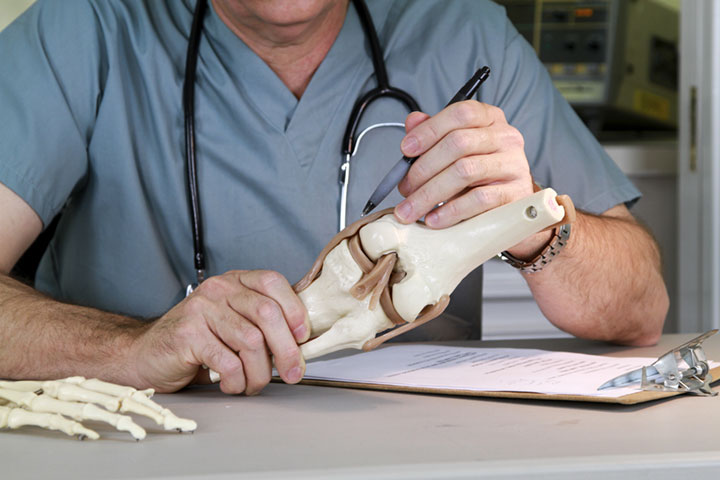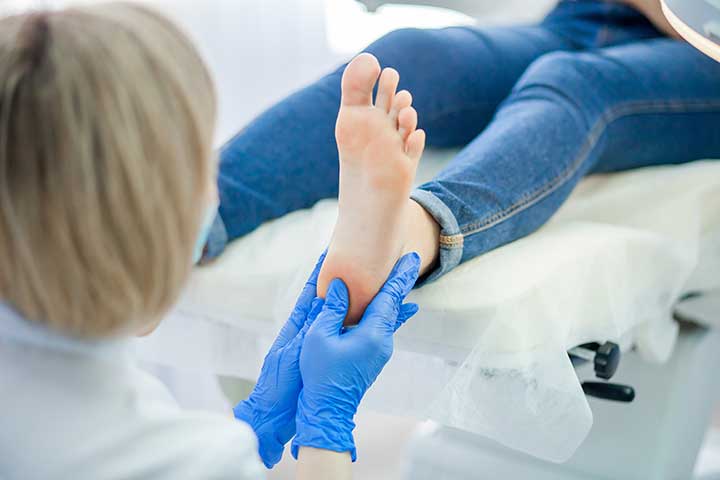Houston Physicians’ Hospital’s Chairman, Dr. Greg Bonnen presents to an INSIGHTEC Virtual Patient Webinar entitled “From Dependent to Independent” on January 24 2024.
BCBS-TX Health Insurance Patients Now Considered at Houston Physicians’ Hospital Effective November 1, 2021
Here at Houston Physicians’ Hospital (HPH) we have always been committed to providing the highest quality health care to our patients at an affordable price.
HPH has continuously provided top-quality care and the highest value to our patients and will continue to do so in the future. We are also one of only three hospitals in the entire Houston area with a 5-Star Rating in Patient Experience from CMS.
To maintain the level of high-quality services patients have come to expect from HPH and to give BCBS-TX patients continued access to our services, we have been negotiating a new contract with Blue Cross Blue Shield of Texas (BCBS-TX) over the past year. During these negotiations, BCBS-TX temporarily suspended our contractual arrangement with them.
We are sending this letter to inform our patients that we will once again consider patients with BCBS-TX health insurance in-network and will resume billing as such starting November 1, 2021.
Thank you for your understanding and we look forward to continuing to serve you and your family’s healthcare needs.
Best,
Heather Womack, CEO
Why Millennials Suffer From Back and Neck Pain
Back pain and neck pain are common problems for a lot of people, but several studies have shown that millennials are more prone to back and neck pain than individuals of previous generations. Millennials, also known as Generation Y, are the first generation to grow up with technology such as cellphones and tablet devices and their associated constant connectivity.
It’s no surprise that technology has become a vital part of everyday life for millennials. However, while the long-term effects of intensive technology usage are unknown, some signs are starting to show. Back and neck pain are becoming increasingly common among this well-connected always-online generation.
Continue reading “Why Millennials Suffer From Back and Neck Pain”
Parents And Chronic Joint Pain: 5 Tips for Relieving Pain and Regaining Mobility
As the COVID-19 pandemic reemerges, parents have been struggling to keep their mental and emotional health on track. With schools across Southeast Texas out for the summer, keeping children active, motivated, and encouraged has proven to be more challenging than expected.
According to Time, parents of middle schoolers are especially struggling during the ongoing period of uncertainty and chaos. Create another subset of parents with disabilities and chronic conditions, and the stress increases twofold.
If you’ve been finding it hard to navigate the COVID-19 landscape while tending to your children and suffering from a joint pain condition, you’re not alone.
With over 54 million Americans suffering from chronic joint pain, the likelihood that you’re one of them is pretty high.

We’ve rounded up five tips for relieving joint pain to help you power through the turbulent period and regain your mobility.
1. Distribute Chores Among Your Partner and Children
It’s commons sense that if you experience pain, stop doing what you’re doing. Performing certain tasks that put excessive strain on your joints can exacerbate joint pain, stiffness, and soreness. Don’t be afraid to ask for help. Distribute chores among your partner and your children so that you don’t overwork your joint capsule, ligaments, subchondral bone, and synovium.
If you feel pain, take a break or do the lighter chores to reduce stress on your joints i and keep pain at a minimal.
2. Take a Break

Isn’t it obvious? If you can’t remember the last time you took a breather, it may be time to indulge in one. Breaks help you take the stress off your joints so that they can heal—even for just a few minutes.
Sleep is the ultimate break allowing delicate joint structures to heal overnight.
Be sure to allocate a certain amount of time for rest each day. Whether you take a warm bath to relax stiff joints or take a relaxing yoga class, give yourself some time to relieve stress and joint pain.
3. Incorporate Strengthening Exercises into Your Daily Routine
Strengthening the muscles through exercise is one of the most effective ways to reduce joint pain and enhance mobility.
If you’ve been noticing that your range of motion has been restricted lately, do some strength training exercises to improve your mobility.
You can engage your musculoskeletal system by incorporating hamstring curls, calf raises, wall squats, side leg raises, and leg extensions into your routine. Make sure you use good posture to minimize knee strain.

4. Try Physical Therapy
Physical therapy can play a big role in strengthening joints that have been weakened by excessive wear-and-tear, damage, and inflammation.
If you’re suffering from osteoarthritis or rheumatoid arthritis, see your doctor to see if you should work with a board-certified physical therapist to help ease stiffness, swelling, and discomfort. As you follow proper body mechanics, you’ll notice your overall mobility and balance will improve.
Based on the severity of your symptoms, your physical therapy plan may include one or more of the following treatments:
- Stretches and Exercises
- Electrical Stimulation or Muscle Stimulation
- Iontophoresis
- Ice and Heat Therapy
- Ultrasound Massage
- Manual Therapy
- Vestibular Rehabilitation
5. Consider Joint Surgery
Home remedies, over-the-counter medications, cutting down on stress, and following a strict exercise plan can go a long way in alleviating symptoms. But for more severe conditions joint surgery could be the best way to find long-term relief.
While your condition may vary, in many cases, patients sometimes expect that joint surgery is the best solution, but their doctor will recommend an alternate noninvasive or minimally invasive treatment plan instead.
After examining your symptoms, your doctor and orthopedic specialist can determine the best course of treatment to help you regain optimal joint health. We also offer expert physical therapy services, knee replacement, back surgery, and general surgery.
If you’re suffering from joint pain in Houston, Webster, Galveston, Clear Lake, or League City, visit Houston Physicians’ Hospital, where you’ll find a wide range of custom treatment plans to address chronic joint pain. Browse through our Advanced Orthopedic & Spine Center of Excellence to learn about our approach or find a doctor on our website where you can schedule an appointment directly with his or her office.
These Symptoms mean it’s Time to see an Orthopedic Doctor
For some Clear Lake, Texas, patients, the onset of osteoarthritis is inevitable. However, an orthopedic doctor can help manage pain, relieve symptoms, and help you get back to your normal routine. At Houston Physicians’ Hospital, we know the importance of managing bone conditions like osteoarthritis, so we’ve listed some signs that mean it’s time to visit a medical professional for a treatment plan:
- You Experience Joint Pain
Pain is the most common symptom of osteoarthritis, and it is typically the primary reason that prompts patients to seek medical attention [1]. Joint pain that is severe enough to restrict daily activities and movement indicate that an orthopedic specialist is needed. Ignoring the problem without a treatment plan can cause more pain over time, as the cartilage wears down and causes bones to rub together.
- You Have Trouble with Movement
As osteoarthritis progresses, movement becomes more difficult. In fact, the strong association of pain intensity and severity of functional limitation has been well-documented [3] in patients with osteoarthritis. When daily tasks as simple as climbing stairs and bending the knees become extremely painful, it is best to seek the help of an orthopedic specialist.
- Re-occurring Joint Problems
Joint pain, stiffness, instability and joint space narrowing are major clinical symptoms of osteoarthritis [2]. However, there are symptoms that, when frequent, specifically indicate worsening osteoarthritis. These signs include:
- Bumps or bony spurs in the joint
- Locking or buckling of joint
- Hearing the joint pop or crack while moving
If the associated symptoms last for more than three days and joint problems occur several times during the month, it’s a good sign that you need to schedule an appointment with a medical professional.
Joint pain caused by osteoarthrosis can cause difficulty for many patients. However, with the help of an orthopedic doctor, we can help get you back to a pain-free life. Don’t let osteoarthritis hold you back. Call us at (281) 557-5620 or visit us at https://www.houstonphysicianshospital.com/contact-us/.
References
1.https://www.ncbi.nlm.nih.gov/pmc/articles/PMC3753584/
The Top Reasons You Should See a Podiatrist to Treat Your Feet
Many Clear Lake, Texas, residents experience issues with their feet from time to time. A simple pain in the foot can be an indicator of an underlying podiatry issue, and it can be difficult to determine whether a foot problem is severe enough to see a podiatrist. At Houston Physicians’ Hospital, we understand that patients want to take care of their feet, so we’ve listed a few conditions that may require you to consult a Clear Lake foot specialist.
- Ingrown Toenails
An ingrown toenail occurs when the corners of your nail (often the nail on your big toe) grow into the skin of the toe. It is the most commonly encountered toenail problem in general practice [1]. Some early symptoms a patient may notice include:
- Pain when exerting pressure on the toe
- Build up of fluid around the toe
- Tender, hard, swollen skin around the nail
If left untreated, an ingrown toenail can become infected. Some signs that an ingrown toenail has become infected include a red, swollen, tender toenail that oozes blood.
If you experience any of these symptoms, especially the symptoms of infection, you should see a podiatrist immediately for proper treatment.
- Flat Feet
Pes Planus, fallen arches, or flat feet are all terms used to describe a foot that doesn’t have an arch on its medial aspect. Typically, this condition is seen in toddlers around 2 or 3 years of age but dissipates as muscles and ligaments tighten. However, some patients find that this condition develops during adulthood.
Flat feet rarely lead to a serious medical issue, but they may create problems with walking, running, or prolonged standing. Genetic predisposition and increased physical activity are some factors that can increase your susceptibility to develop the condition in adulthood.
For many patients with flat feet, the main question is when to see a podiatrist. You should consult a Clear Lake foot doctor as soon as you notice even slight pain when walking, because research has proved that early detection and management tend to minimize complications of flat feet [2]. Some of these complications can include:
- Injuries
- Poor postural stability
- Discomfort
After investigating and diagnosing the exact type of condition, your podiatrist will suggest an appropriate treatment plan.
- Bunions
A bunion is a bony, painful hump composed of extra tissue that appears at the base of the big toe over a period of time. It is one of the most common reasons for pain while walking. Bunions tend to form at the joints gradually, causing pain when walking due to the amount of body weight placed on the area with each step.
While bunions often have a genetic link, poor foot structure may contribute to their formation as well. Additionally, weak muscles may also be one of the factors responsible for its formation [3]. Females are more likely to develop this condition, with 35% of women above 65 years of age affected [3].
An obvious change in shape of the big toe and pain while walking should prompt one to see a podiatrist. Depending on the cause of the bunion, a podiatrist will formulate a proper treatment plan. While surgery is commonly done to alleviate the discomfort associated with a bunion, more conservative options include:
- Over-the-counter medications
- Shoe inserts
- Heating pads
- Soaking the foot in warm water
If you believe your feet are suffering from any of the above-mentioned conditions, it is a good idea to schedule an appointment with a podiatrist. The specialized podiatrists at Houston Physicians’ Hospital, will help you identify, as well as correct, the problem in no time. Give us a call at (281) 557-5620 or visit us at https://www.houstonphysicianshospital.com/podiatry/.
References
[1] https://www.ncbi.nlm.nih.gov/pubmed/25770573






